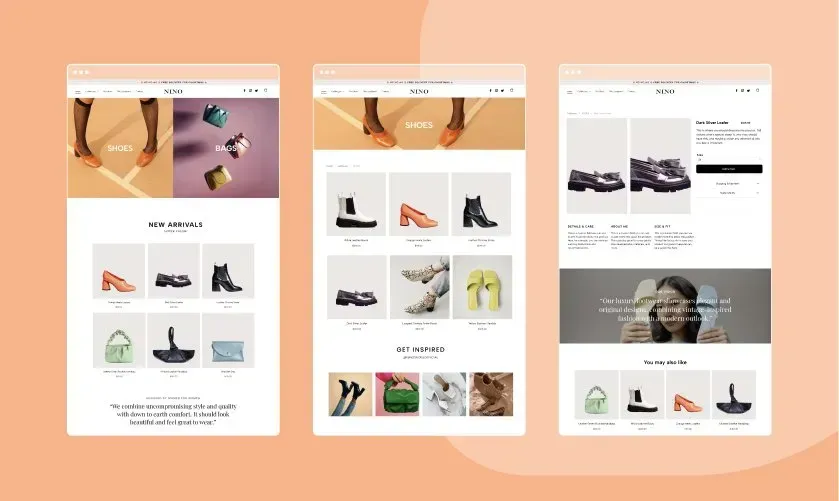You’ve invested lots of time and money into building your perfect website for your business, but you’re still not getting the traffic and conversions you were hoping for. This feeling can be super frustrating, but don’t get too down in the dumps. Lots of pieces go into a perfect site and each of them has to be tweaked from time to time. We've taken a look into some of the most common reasons why your website is failing to perform and what you can do to rectify them.
Your website has poor (or no) SEO
If your website is experiencing low traffic numbers, it might be worth looking at your SEO strategy. There are helpful tools out there, such as SEMrush, which allow you to see how your website ranks for designated keywords, as well as how your competitors are ranking. In addition, it’s worth checking that your website has been optimised for SEO with other things like metadata, image alt text and relevant content, as this can all have a severe impact on your rankings on search engines such as Google, which will ultimately impact your website’s performance. To learn more about what you can do to improve your ranking on Google with changes to your SEO, click HERE.
What you do isn’t clear
This is a major one! Another reason you might be experiencing poor performance from your website is because what you do isn’t clear enough when people visit your website. To test this theory, it’s worth having some friends, family, and even strangers visit your website and ask them if they can tell, within a matter of seconds, what it is your business does, resolves or sells. If they can’t, then you need to rethink your website’s content.
You haven’t got an SSL certificate
If your website URL hasn’t got the HTTPS (https://avantyplc.com/), then you’re missing an SSL certificate for your domain. This might sound like technical jargon, but not having an SSL certificate means that some browsers will flag your website as not secure and direct users away from it. Not only does the HTTPS reassure users that your website is secure, instilling trust with them, but it also impacts how search engines like Google rank your website. Therefore, not having one can have a significant impact on your website’s performance, so you should speak to your domain provider about this as soon as possible. NOTE: every website built on the Avanty platform comes with an SSL certificate, so you never have to worry about this being a problem with us!
Your website isn’t responsive
Not long ago, Google released an algorithm update that focused on boosting the ranking of mobile-friendly websites and pushing those that aren’t responsive further down the results pages. Even without this update, we know from experience that responsive websites help produce a better user experience. We recommend you run your website through Google’s mobile-friendly test to give you an idea of how the search engine ranks your site and, if your website isn’t already responsive, you know you need to sort that out. Visit our blog '6 Tips for Optimising Your Website for Core Web Vitals' for more information.
Your content isn’t targeting the right audience
If your website traffic is low, but you think you’ve implemented the SEO best practices above, then you might find that your content isn’t speaking to your target audience. The best way to determine this is by looking at your bounce rates with Google Analytics. While high bounces for one-page sites are acceptable, if it’s high for lots of pages, then it might be that your content isn’t resonating with your visitors, causing them to leave your website. In the case your bounce rate is high on more than one page of your website, revisit the content and images. Make it obvious what you do and who you do it for, within seconds of being on your website.
Your images aren’t optimised
Unoptimised images can impact loading speed and SEO, so this could be a more significant reason why your website isn’t performing well. Make sure you’re sizing your images correctly, saving them in the correct format and using appropriate ALT text when uploading them, to optimise the image and therefore enhance your website’s performance. Click HERE for more on image optimisation.
Your website is too slow
Research tells us that the average site takes around 15 seconds to load, which when you consider that over 50% of mobile users will leave if a website takes longer than three seconds, isn’t good enough. If your website falls into this category, then bounce rates will be up and it will tell Google that your website isn’t serving the user’s needs. Therefore, they’ll start pushing you down the Google rankings. Keep an eye on your website’s speed with a Page Speed Insights test and follow their tips for optimising your website better. Please note some of the elements can be technical, so you may need to speak to a web developer or agency to help you.
Your user experience (UX) is poor
Always make user experience a priority when it comes your website. After all, your website exists to serve the needs of your audience. If it isn’t doing this, then it isn’t performing. And well, a bad user experience simply drives web visitors away. An excellent way to identify if your website provides a good user experience is to think about your key goals on the site. For example, it might be that you want users to download your eBook, purchase your products or complete a form. Whatever it is, your users should find it as part of their journey. We recommend you use Google Analytics to set up goals for your website. You can also use the Analytics Behaviour Tool dashboard to see where users are dropping off in their journey through your site, and this will help you identify which areas of your site you need to improve for your users.



